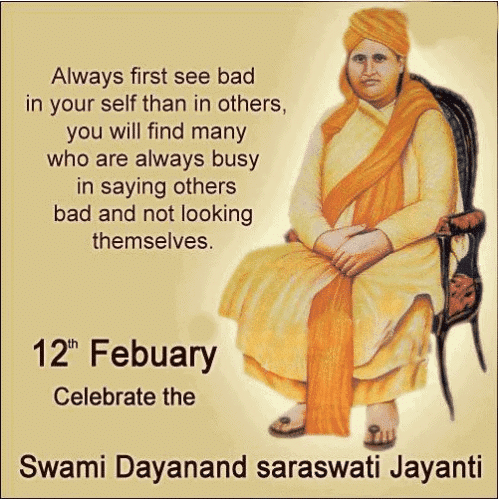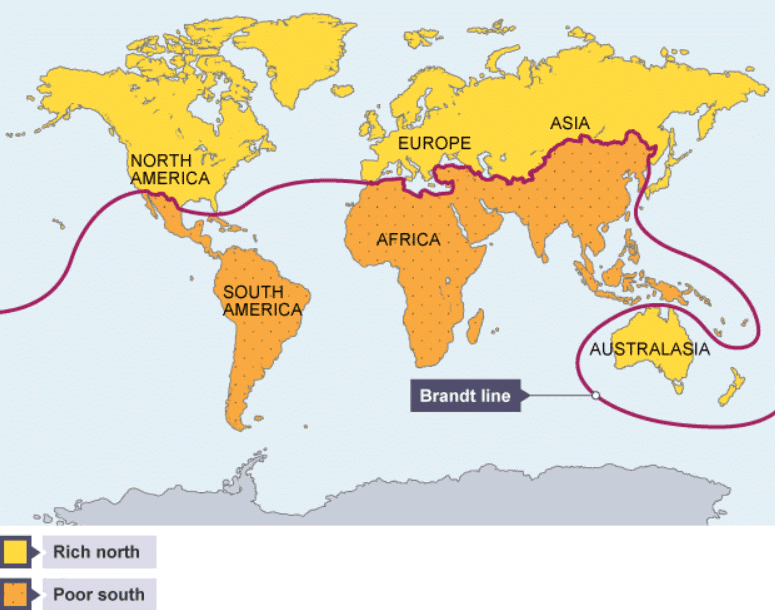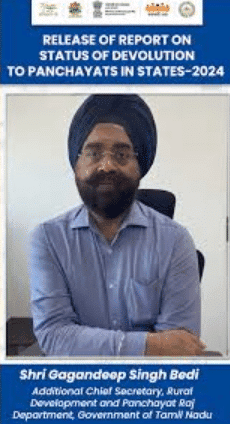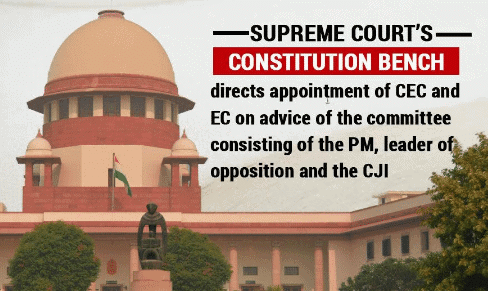Weekly Current Affairs (15th to 21st February 2025) - 1 | General Test Preparation for CUET UG - CUET Commerce PDF Download
Marital Rape in India
 Why in News?
Why in News?
- In the case of Gorakhnath Sharma vs State of Chhattisgarh (2019), the High Court ruled that a husband cannot be charged with rape or unnatural sex with his wife if she is above 15 years of age, irrespective of her consent. This decision was based on Exception 2 under Section 375 of the Indian Penal Code (IPC), which provides immunity for husbands in such circumstances. Additionally, the Supreme Court is currently hearing petitions advocating for the criminalization of marital rape, supported by women's rights activists.
Key Takeaways
- The High Court's ruling reflects the existing legal framework that currently does not recognize marital rape as a crime in India.
- There is ongoing debate and legal scrutiny regarding the criminalization of marital rape, with women's rights groups pushing for change.
Additional Details
- What is Marital Rape? Marital rape is defined as a form of intimate partner violence where one spouse forces sexual acts on the other without consent. In India, it is not classified as a crime unless the couple is separated.
- Legal Stance: Under Section 375(2) of the IPC, sexual acts between a man and his wife who is not under 15 years of age are not considered rape. However, the age of consent was raised to 18 years following the Supreme Court's judgment in the Independent Thought vs UoI Case (2017), which deemed the previous exception unconstitutional.
The discussion surrounding marital rape in India reveals significant tensions between personal autonomy, legal equality, and prevailing socio-cultural norms. While some judicial rulings have emphasized the importance of consent and individual dignity, legislative action remains limited. The need for legal clarity continues to be a critical issue as societal attitudes evolve.
Birth Anniversary of Swami Dayanand Saraswati

Why in News?
- The Prime Minister paid homage to Swami Dayanand Saraswati (1824-1883) on his 201st birth anniversary, celebrated on 12 February 2025. Swami Dayanand, a prominent thinker, ardent nationalist, and founder of the Arya Samaj, made significant contributions to social reform and education in India.
Key Takeaways
- Swami Dayanand Saraswati was born as Mool Shankar Tiwari in February 1824 in Tankara, Gujarat.
- He renounced worldly life at 19 and spent nearly 15 years seeking spiritual truth.
- He founded Arya Samaj in 1875 and emphasized returning to Vedic teachings.
- His work influenced Indian nationalism and social reforms, advocating for women's education and the abolition of social evils.
Additional Details
- Early Life: Born into an orthodox Brahmin family, he questioned idol worship and social superstitions from a young age.
- Philosophy and Reforms: He opposed practices like untouchability, caste discrimination, and polygamy, advocating for a classless society.
- Educational Contributions: Inspired the establishment of modern educational institutions, including Dayanand Anglo-Vedic (DAV) schools.
- Nationalist Movement: He was the first to call for "Swaraj" in 1876, impacting leaders such as Bal Gangadhar Tilak and Mahatma Gandhi.
- Arya Samaj: Founded to promote Vedic knowledge, it rejects idol worship and social evils, advocating for social reforms.
Swami Dayanand Saraswati's legacy continues through institutions like DAV schools, which play a crucial role in shaping modern education while promoting his vision of social equality and reform.
India as a Bridge Between the Global North and South

Why in News?
- Prime Minister Narendra Modi emphasized India's dedication to enhancing the voice of the Global South and leading reforms in global governance, positioning India as a bridge between the Global North and South.

Key Takeaways
- India proposes a collaborative development model distinct from Western and Chinese approaches.
- The nation seeks to enhance representation for developing countries in global decision-making platforms.
- India's initiatives, such as the Vaccine Maitri, demonstrate its commitment to the welfare of developing nations.
Additional Details
- Bridging the Global North-South Divide: Many developing nations are struggling with economic distress due to debt crises. India offers a non-conditional development cooperation framework through its "Global Development Compact."
- Historical Contributions: India's early involvement in the Global South includes establishing the Non-Alignment Movement (NAM) and the Group of 77 (G-77) to unify developing nations.
- Assertive Foreign Policy: India is now an active participant in global governance, showcased by the inclusion of the African Union in the G20 under India's presidency.
- Countering China: India positions itself as a transparent and sustainable alternative to China's Belt and Road Initiative (BRI), focusing on cooperative development rather than debt-driven projects.
- Challenges: India faces challenges such as managing China's influence, delays in project implementation, and the need for a well-defined institutional framework for global development aid.
In summary, India's leadership in the Global South is crucial for reshaping global governance and promoting inclusive development. By addressing its internal challenges and fostering transparent partnerships, India aims to establish itself as a significant contributor to sustainable growth and equity on the global stage.
Mains Question:
- India aspires to be the ‘Voice’ of the Global South, but it must also ‘listen’ to be a good leader. Critically analyze India’s role in reshaping global governance.
Status of Devolution to Panchayats in States 2024 Report

Why in News?
- The Ministry of Panchayati Raj has released a report titled “Status of Devolution to Panchayats in States – An Indicative Evidence Based Ranking,” highlighting the progress in empowering Panchayati Raj Institutions (PRIs) across India.
Key Takeaways
- The overall devolution to rural local bodies has increased from 39.9% in 2013-14 to 43.9% in 2021-22.
- Top 5 States ranked for devolution are Karnataka (1), Kerala (2), Tamil Nadu (3), Maharashtra (4), and Uttar Pradesh (5).
- Lowest-ranked states/UTs include Dadra & Nagar Haveli and Daman & Diu (13.62), Puducherry (16.16), and Ladakh (16.18).
Additional Details
- Panchayat Devolution Index 2024: This index evaluates the autonomy and empowerment of Panchayats by assessing the devolution of powers and resources across Indian states and Union Territories.
- Dimensions Assessed: The report assesses six critical dimensions: Framework, Functions, Finances, Functionaries, Capacity Building, and Accountability of the Panchayats.
- Improvements in Infrastructure: Government initiatives have strengthened PRIs through infrastructure development, staffing, and digitalization, raising the functionaries index from 39.6% to 50.9%.
- Rashtriya Gram Swaraj Abhiyan (RGSA, 2018): This program has enhanced the capacity component of the Index from 44% to 54.6%.
Overall, the report indicates notable progress in empowering local bodies through increased devolution and improved infrastructure. However, it also highlights persistent challenges such as weak financial autonomy, inconsistent devolution, and inadequate accountability. Addressing these issues is crucial for further empowering PRIs and ensuring sustainable local governance and development.
9th Anniversary of PMFBY

Why in News?
- The year 2025 marks the anniversary of the Pradhan Mantri Fasal Bima Yojana (PMFBY), which was launched in 2016 to safeguard farmers against crop losses caused by unpredictable natural disasters. The Union Cabinet has approved the continuation and restructuring of the Weather Based Crop Insurance Scheme (RWBCIS) until 2025-26.
Key Takeaways
- PMFBY aims to provide financial protection to farmers in the event of crop failure due to natural disasters, pests, or diseases.
- All farmers, including sharecroppers and tenant farmers, are eligible for coverage under PMFBY.
- PMFBY offers coverage against a wide range of risks including natural calamities and post-harvest losses.
- Timely compensation is ensured with claims processed within two months of harvest.
- It has become the world’s largest crop insurance scheme by coverage area and number of farmers.
Additional Details
- Eligibility: All farmers including sharecroppers and tenant farmers growing notified crops in designated areas can participate. Participation is voluntary, with non-loanee farmers accounting for 55% of total coverage.
- Risk Coverage:PMFBY covers various risks including:
- Natural calamities such as floods, droughts, cyclones, and unseasonal rains.
- Pests and diseases affecting crops.
- Post-harvest losses occurring within 14 days of harvest.
- Indemnity claims of up to 25% for prevented sowing due to adverse weather.
- Affordable Premiums: Premium rates are set at 2% for Kharif crops and 1.5% for Rabi crops, with the government covering the entire premium for farmers in specific states.
- Technological Advancements: Use of satellite imagery, drones, and the CCE-Agri App to enhance transparency and efficiency in loss assessment.
Despite these features, PMFBY faces several challenges in implementation. Issues such as delayed claim settlements, geographical disparities in claims, and inadequate coverage for post-harvest losses hinder the scheme's effectiveness.
Challenges in Implementation
- Delayed Claim Settlement: Slow processing and lack of transparency in claims lead to disputes over damage calculations.
- Geographical Disparities: Some states have higher participation and claims, while others lag behind.
- Premium Subsidies: Delays in releasing subsidies can leave claims pending for 12-18 months.
- Post-Harvest Loss Issues: Coverage is limited to physical damage, not quality issues, complicating compensation.
- Data Constraints: Lack of reliable data impacts the accuracy of damage assessments.
- Segregation of Insurance and Disaster Relief: Distinguishing between commercial insurance risks and disaster relief remains a significant challenge.
Way Forward
- Improving Claim Settlement: Establishing monitoring systems to ensure efficient claims processing and adherence to obligations by insurers.
- Addressing Small and Marginal Farmers: Promoting community-based insurance models to cover smaller farmers and reduce transaction costs.
- Addressing Low Penetration: Involving the private sector and banks in increasing awareness of PMFBY.
- Incorporating New Risks: Expanding coverage to include risks from wildlife and other emerging threats to crops.
In summary, while PMFBY has made significant strides in providing crop insurance to farmers, addressing its challenges will be crucial for enhancing its effectiveness and reach.
Appointment of CEC and EC

Why in News?
- Gyanesh Kumar has been appointed as the Chief Election Commissioner (CEC) under the Chief Election Commissioner and other Election Commissioners (Appointment, Conditions of Service and Term of Office) Act, 2023. This appointment has stirred controversy as one of the members of the selection committee raised objections, arguing that the selection process bypassed Supreme Court (SC) guidelines established in the Anoop Baranwal Case, 2023.
Key Takeaways
- The 2023 Act replaces the earlier 1991 Act regarding the appointment and service conditions of the CEC and Election Commissioners (ECs).
- The Act was enacted following Supreme Court intervention due to petitions challenging the Centre's exclusive power in appointing CEC and ECs.
- Key provisions include the establishment of a new selection committee and criteria for eligibility, salary, term, and conditions for removal.
Additional Details
Selection Committee:The CEC and ECs will be appointed based on recommendations from a committee consisting of:
- Prime Minister (Chairperson)
- Leader of the Opposition (LoP) in Lok Sabha
- Union Cabinet Minister nominated by the Prime Minister
Search Committee: A Search Committee led by the Law Minister will shortlist five candidates, with Section 8 allowing the selection committee to consider names beyond this shortlist.
Eligibility Criteria: Candidates must have held a Secretary-level post in the Government of India and have requisite experience and integrity.
Salary, Term, and Reappointment: CEC and ECs receive a salary equivalent to a Supreme Court judge, serve for six years or until the age of 65, and cannot be reappointed. If an EC becomes CEC, their total tenure cannot exceed six years.
Removal and Resignation: The CEC can only be removed in the same manner as a Supreme Court judge, and both can resign to the President.
The 2023 Act has raised concerns about executive influence over the appointment process, with implications for the independence of the Election Commission (EC). The exclusion of the Chief Justice of India from the selection committee and the dominance of the executive in the process could undermine the credibility of the EC, impacting the integrity of elections in India.
In conclusion, while the 2023 Act aims to regulate the appointment of the CEC and ECs more systematically, significant concerns regarding the independence of the Election Commission and the potential for political bias remain. Measures to enhance the autonomy of the EC and restore balance in the selection process are crucial for the future of free and fair elections in India.
Rising Stress in India’s Defence Forces
 Why in News?
Why in News?
- A recent incident involving a Central Reserve Police Force (CRPF) soldier in Manipur, who killed two colleagues before taking his own life, has drawn attention to the increasing stress levels among India’s security forces. The rising instances of suicides and resignations among defense personnel highlight the urgent necessity for improved mental health support and grievance redressal mechanisms.
Key Takeaways
- Rising stress levels in defense forces lead to severe mental health issues and tragic outcomes.
- Over 50% of Indian Army personnel are reported to be under severe stress according to a study by the United Service Institution of India (USI).
- Both operational and non-operational stressors contribute significantly to the mental strain experienced by personnel.
Additional Details
- Operational Stressors: Prolonged deployments in Counter-Insurgency/Counter-Terrorism (CI/CT) operations, along with continuous exposure to high-risk environments such as extreme weather and difficult terrain, significantly contribute to stress levels. The nature of military operations demands constant vigilance and quick decision-making, which can be overwhelming.
- Non-Operational Stressors: Issues such as leadership gaps, conflicts with peers, frequent transfers, and administrative challenges create an unstable environment that intensifies stress. Furthermore, inadequate infrastructure and support, such as poor quality rations and lack of recreational facilities, exacerbate the situation.
- Mental Health Stigma: Many personnel face stigma concerning mental health, which discourages them from seeking help due to fears of appearing weak.
- High levels of stress correlate with increased incidents of suicides and fratricides, further threatening the operational effectiveness and morale of the forces.
In conclusion, addressing the rising stress levels among India’s defense personnel is vital for maintaining national security and operational effectiveness. Implementing comprehensive mental health support systems, conducting periodic stress assessments, and improving grievance redressal mechanisms are essential steps forward to mitigate these issues.
|
164 videos|626 docs|1132 tests
|





















